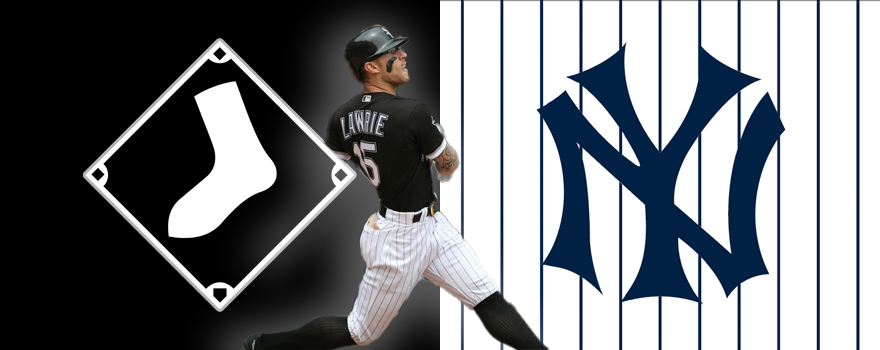When news broke Monday afternoon that the Chicago White Sox and New York Yankees had reached an agreement to trade send Brett Lawrie to New York, few were surprised.
For one, of American League teams who seemingly made sense to go after Lawrie, the Yankees sat at the top of the list. While current second baseman Ramon Ortiz has 18 home runs, he’s barely hitting above .200 while possessing an on-base percentage that hovers just around .250. Lawrie will bring the same power, with a much better track record of putting the bat on the ball and then the ball in play.
Beyond the perfect match in need, it was a trade that many saw coming for another reason. This is the third trade between these two teams since May 10th, the fourth since Opening Day, and seventh in the last calendar year. When it comes to open lines of communication, no two teams better exemplify that then these two organizations.
The Yankees will have to wait a month before Lawrie joins the lineup as he currently is dealing with an injury. When he does join the squad, it will be interesting to see where he is placed in the batting order. A likely approach would be to place him in the two-spot in front of the likes of Arrai, Sano, Sanchez, and Velazquez. If the Yankees are able to get continued production out of Wil Myers and Rafael Luna leading off, the number of runners on base for the heart of the order will grow drastically.
The question becomes, did they need the bat?
As a team, New York sits in the top five in slugging percentage, OPS, and runs scored. They are an extra-base and home-run hitting machine. Yet, they sit in fourth place in the AL East in part because of near bottom of the barrel pitching. Among the AL’s worst in team ERA, a team that does not strike out enough batters, while allowing too many walks, and too many homers.
Dylan Bundy had struggled in 2021, allowing five earned runs in each of his final two starts in pinstripes. Will Lucas Sims or Michael Pineda be moved to the rotation? Will we see Ethan Small promoted? The internal options are bare and the ammo to acquire an arm that can help is also minimal.
For Chicago, a season that began with expectations has been anything but on schedule. A team that has turned the tables of late trading-off some veteran pieces. The White Sox have made very team friendly deals of late in bringing in pieces that some league insiders have loved in Spencer Torkelson and Tyler Hill.
With Lawrie, league sources suggested the White Sox were after multiple talented prospects to part with him. Ultimately, this deal brings in Bundy along with 25 year-old Ashton Moore (the Yankees top pitching prospect, who is unranked among the league’s top prospects), Roger McAfee the power-hitting utility infielder who struggles to make contact, and 2020 fifth-round pick, catcher Dayon Hayes who seem feel can have a big-time power bat if and when he makes contact.
- Brett Lawrie needed to be traded.
- Brett Lawrie is expected to opt-out of his contract at the end of the season.
- Brett Lawrie is hurt and shelved for the next month.
Did all of this come into play and limit the number of pursuers? Did the original asking price keep some away?
With the dust settled, the success of this trade falls onto the right arm of Dylan Bundy. If he can harness his ability and production he showed in Seattle for several seasons, this will be a tremendous move for the White Sox. New York was not kind to Bundy, but a BABIP nearly 80 points higher than his career average, perhaps it was just bad luck in front of a bad defensive team.
For the time being, we sit back and wait. Wait to see how this trade unfolds on the field. We also wait until these two teams strike another deal. We’ll have our answer to both likely sooner than we expect.

